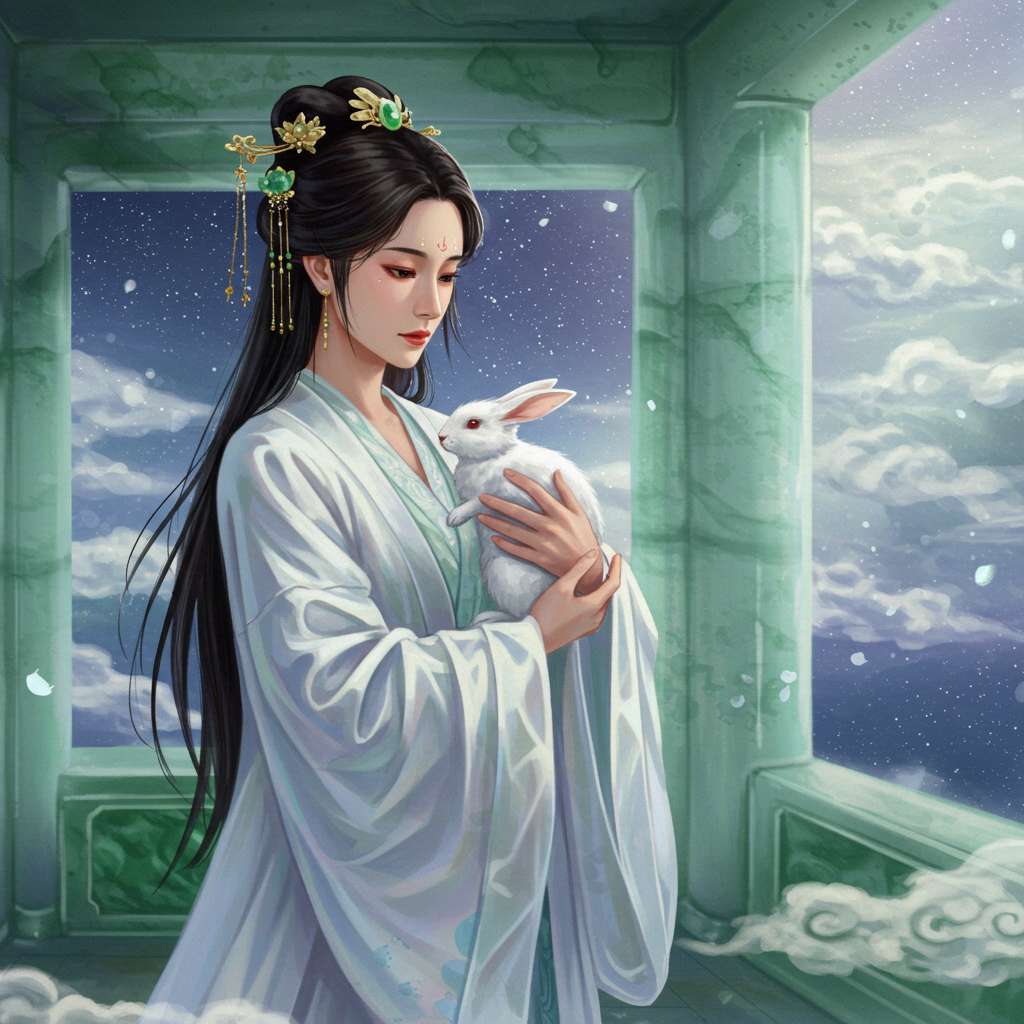
The legend of Chang’e, the Moon Goddess, is one of the most enduring and beloved myths in Chinese folklore. It’s a tale that weaves together elements of love, loss, immortality, and the eternal allure of the moon. Over centuries, this story has captivated hearts and minds, evolving through countless retellings, each adding its own unique brushstrokes to the canvas of this timeless narrative.
The Origins of the Myth
The earliest written accounts of Chang’e’s story can be traced back to ancient Chinese texts, such as the Shan Hai Jing (Classic of Mountains and Seas) and the Huainanzi. These texts offer glimpses into the myth’s nascent stages, portraying Chang’e as the wife of the legendary archer Hou Yi. However, the details surrounding her flight to the moon varied, with some versions depicting her as a reluctant exile and others as a heroic figure seeking immortality.
Hou Yi, the Divine Archer
Central to Chang’e’s story is her husband, Hou Yi, a formidable archer of divine descent. According to legend, during the reign of the mythical Emperor Yao, ten suns appeared in the sky, scorching the earth and causing widespread suffering. Yao implored the celestial realm for aid, and Hou Yi was sent to Earth to quell the chaos.
With his extraordinary archery skills, Hou Yi shot down nine of the ten suns, leaving only one to illuminate the world. His heroic deed earned him the admiration of mortals and immortals alike. As a reward, the Queen Mother of the West bestowed upon him an elixir of immortality.
The Elixir of Immortality
Hou Yi, however, did not immediately consume the elixir. He yearned to remain with his beloved wife, Chang’e, and decided to share the potion with her. He entrusted the elixir to Chang’e, who carefully hid it away.
Chang’e’s Flight to the Moon
The circumstances surrounding Chang’e’s consumption of the elixir vary depending on the version of the myth. In some accounts, she was forced to drink it by a villainous apprentice of Hou Yi, who sought the elixir for himself. In others, she consumed it willingly, either to prevent it from falling into the wrong hands or out of a desire for immortality.
Regardless of her motives, Chang’e drank the elixir and found herself ascending to the heavens, drawn towards the moon. She landed on the desolate lunar surface, where she was destined to spend eternity in solitude.
Life on the Moon
Chang’e’s existence on the moon is often portrayed as one of isolation and regret. Some versions of the myth depict her accompanied by a jade rabbit, her only companion in the vast emptiness of the lunar landscape. Others portray her as a lonely figure, forever gazing down at the world she left behind.
Over time, Chang’e transformed into the Moon Goddess, a symbol of beauty, grace, and the ethereal allure of the moon. She became the object of veneration, with people offering her mooncakes and other delicacies during the Mid-Autumn Festival, a celebration that commemorates her legendary flight.
Symbolism and Themes
The myth of Chang’e is rich in symbolism and explores several universal themes. The moon itself represents femininity, mystery, and the cyclical nature of life. Chang’e’s journey to the moon can be interpreted as a metaphor for the human desire for immortality, the consequences of choices, and the enduring power of love.
The myth also touches upon the theme of separation, both physical and emotional. Chang’e’s forced departure from her husband and her earthly life highlights the pain of separation and the longing for reunion.
Cultural Significance
The legend of Chang’e has permeated Chinese culture, influencing art, literature, and folklore for centuries. Her image has graced countless paintings, poems, and stories, and her name has been invoked in countless songs and plays.
The Mid-Autumn Festival, also known as the Moon Festival, is a testament to the enduring popularity of Chang’e’s story. During this festival, families gather to admire the full moon, share mooncakes, and celebrate the legend of the Moon Goddess.
Modern Interpretations
In modern times, the myth of Chang’e has taken on new dimensions, reflecting contemporary concerns and aspirations. In 2007, China launched its first lunar orbiter, named Chang’e 1, followed by subsequent missions, including the Chang’e 4, which achieved the first-ever soft landing on the far side of the moon. These missions have not only advanced our understanding of the moon but also served as a powerful reminder of the enduring legacy of Chang’e, the Moon Goddess.
Conclusion
The legend of Chang’e Flying to the Moon is a timeless tale that continues to resonate with people of all ages. It’s a story that speaks to the human fascination with the moon, the enduring power of love, and the eternal quest for immortality. As we gaze up at the moon, we are reminded of Chang’e, the Moon Goddess, forever enshrined in the celestial tapestry of our imaginations.

Leave a Reply